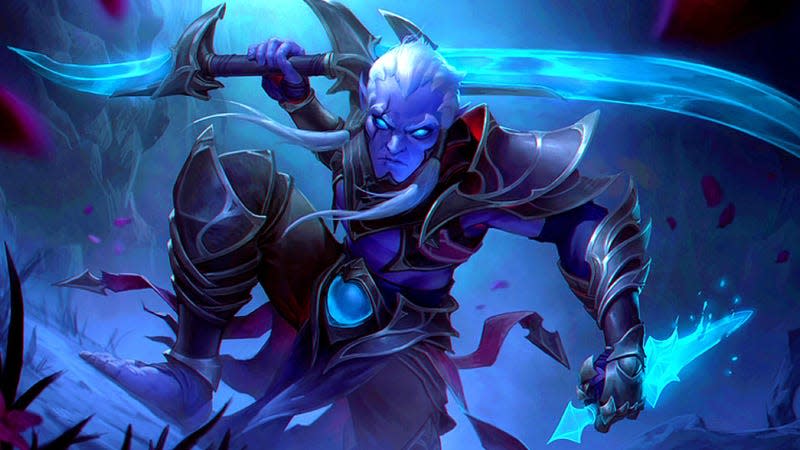Valve Is Ditching Battle Passes Since Most Players ‘Never Buy’ One

Valve—the company behind Half-Life, Counter-Strike, and digital game store juggernaut Steam—has revealed its future plans for its popular free-to-play MOBA, Dota 2. And those plans, surprisingly, don’t involve players buying annual paid battle passes that require grinding to unlock cosmetics and other new content. Apparently, and this is maybe even more surprising, Valve says most players never even bought a battle pass.
Dota 2, the Valve-developed sequel to popular Warcraft III mod Defense of the Ancients, turns 10 years old this year. Since launching in 2013, the competitive PC game has continued to be one of the most popular games on Steam, and has attracted millions of viewers via large-scale online tournaments. Dota 2 also was one of the very first video games to launch a battle pass system, tasking players—after buying access—to level up and complete challenges to unlock limited-time content like skins. That type of reward system has become widely used by most free-to-play online video games, like Fortnite and Rocket League.
Read more
But now, after helping pioneer battle passes, Valve is ditching them because the company says they sucked up too many resources while not really being something most Dota 2 players actually engaged with.
Why Valve is moving away from battle passes in Dota 2
On Monday, Valve posted a new blog about what it had learned after a decade of running Dota 2. Its main takeaway is that the battle pass—which is connected to the annual Dota tournament known as The International—got too big and was causing problems. According to Valve, over time, the battle pass grew into a massive operation that sucked up nearly all the time, ideas, and resources of staff working on the game. In the early days of Dota 2, content updates were more varied and frequent. But over time the battle pass began to consume every idea or feature, leading to a situation where for most of the year Dota 2 had little to no new content until the next big battle pass update.
Valve recently realized this and decided to change things up.
“[We took] some of the resources that would normally produce Battle Pass content and instead put them towards more speculative updates, including features and content that couldn’t fit into a Battle Pass,” Valve wrote in the blog. “While work is still in progress on future updates, the first of these has shipped: ‘New Frontiers’ and patch 7.33 couldn’t have shipped as they did if we were focusing all our efforts on producing Battle Pass content.”
DUZT / Valve
Perhaps the most interesting bit from this entire blog post is Valve admitting that, according to its data, most players never bought a battle pass or got any rewards from those yearly updates. On the flip side, Valve says “every Dota player” has gotten to explore the game’s newest map, play with all the new items added, and enjoy all the new UI and client improvements that were part of patch 7.33.
“Community response to ‘New Frontiers’ has helped us build confidence that working less on cosmetic content for the Battle Pass and more on a variety of exciting updates is the right long-term path for Dota as both a game and a community,” said Valve.
The future of Dota 2’s annual International updates
Valve did clarify that it will still have content that is connected directly to The International and its prize pool, just as it has with the battle pass, but that this update won’t be filled with new, fancy cosmetics for players to chase after. And because of how big a change this is, coming after nearly a decade, Valve is “intentionally” not calling the next International-focused update a battle pass.
It’s a big shift for one of the biggest free-to-play games on Earth. And if one of the biggest of the big wasn’t selling many battle passes, it makes you wonder just how few battle passes are being sold in other, less-popular F2P games. I also wonder why it took a decade for Valve to realize that most players prefer frequent updates instead of single, annual updates locked behind a paywall.
“By freeing Dota’s update and content cycle from the timing and structural constraints of the Battle Pass,” Valve wrote, “we can go back to making content in the way we know best: by coming up with fun ideas of all scales and shapes and exploring them with you.”
More from Kotaku
Sign up for Kotaku's Newsletter. For the latest news, Facebook, Twitter and Instagram.
